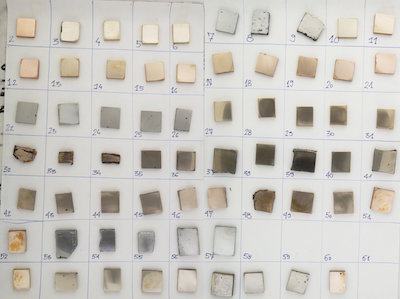By analyst
A team of Serbian and UK researchers published a study today in the Journal of Archaeological Science where they explain how they developed a Cu-As-Sn (Copper-Arsenic-Tin) colour ternary diagram to uncover the original colours of archaeological artifacts now patinated through age and exposure.
According Miljana Radivojevic, lead author of the paper and a researcher at the McDonald Institute for Archaeological Research, University of Cambridge, the colour properties of prehistoric copper alloys, such as tin bronzes or arsenical copper, have largely been understudied despite the fact that these are the most abundant type of metal artifacts in prehistory.
Knowing the importance of aesthetics in ancient metallurgy, Radivojevic and her team decided to dig into those objects’ initial colour by experimentally replicating the most common prehistoric alloys, made of binary and ternary combinations of copper, arsenic and tin. Once they did that, they were able to produce a colour chart that comes the closest to showing the true ‘bling’ of such artifacts in the past.
“We were inspired by modern jewellery-making where similar colour charts are used to explore properties of gold-copper-silver alloys,” the lead-scientist said in a press release. The overall study, however, was prompted by the discovery of the world’s earliest tin bronze artifacts four years ago in Serbia and the ongoing debate into what significance colour played in the advancement of metal-making technologies.
“The copper-tin-arsenic ternary colour charts enabled us to re-evaluate the claim that early tin bronzes in the Balkans had a distinctive golden hue”, Radivojevic added. “It is now highly likely that the production of this new alloy in the Balkans at the same time as gold could have been dictated by the demand for the ‘exotic’ golden hue, or its closest imitation.”
With this discovery, researchers now have the means to bring shine to the items that have lost their original aesthetic appeal by being buried for several millennia. The colour charts are also expected to be useful tools for museums and archaeology students, as they would help people imagine what metal objects looked like thousands of years ago.
The post Prehistoric bling: Research uncovers factors behind the development of earliest copper alloys appeared first on MINING.com.
Source:: Infomine
The post Prehistoric bling: Research uncovers factors behind the development of earliest copper alloys appeared first on Junior Mining Analyst.

